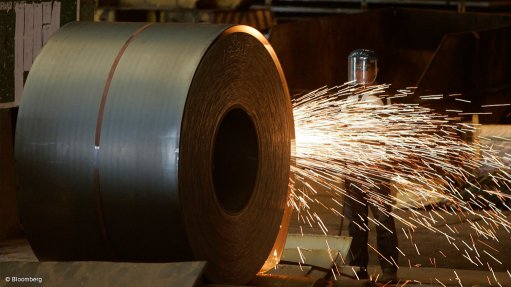
A leading trade adviser is urging companies and individuals with interests in South Africa’s steel value chain to respond to the International Trade Administration Commission’s (Itac’s) call for comment on its wide-ranging review of the steel tariff structure, warning that a failure to do so would limit their chances of challenging the outcome.
Itac published details of the much-anticipated review in a March 19 Government Gazette notice and provided a four-week comment period, implying a deadline of April 16.
The review covers the tariffs on steel and stainless steel products included in chapters 72, 73, 82 and 83 of the Customs and Excise Act, which XA Global Trade Advisors MD Donald MacKay says involves 609 tariff codes that govern R67-billion of yearly imports.
Chapter 72, for instance, deals with primary carbon and stainless steel products such as hot-rolled coil, Chapter 73 with steel articles such as wire and pipes, Chapter 82 with tools and cutlery, and Chapter 83 with miscellaneous steel products, including such items as padlocks.
Besides assessing existing protection measures and rebates, as well as ways to tackle ongoing customs fraud, the review will consider the addition or removal of rebates, along with new or higher tariffs, additional import controls, and even the introduction of minimum reference pricing on certain products.
The scope has also been widened to include an assessment of measures to lower the cost of raw materials, including iron-ore, coking coal and scrap, with the price and movement of scrap already regulated by a price preference system and an export tax.
This has resulted in significant discounts for scrap-based steelmakers, which ArcelorMittal South Africa (AMSA) has highlighted as one of the major reasons behind its decision to wind down its Newcastle mill, which produces steel from iron-ore and coking coal, as well as its associated long-steel units in Mpumalanga and Gauteng.
MacKay describes the scope of the review as unprecedented and cautions that the interventions that may arise could have material implications, particularly should new import restrictions be imposed.
“I think the scope of this review is so big that there will be collateral damage,” he says, indicating that there is still uncertainty whether government could, following the review, impose tariffs at the World Trade Organisation (WTO) bound rate, or even beyond.
The bound rate is the maximum tariff a WTO member country can implement on imports, but countries can impose higher tariffs on an emergency basis, by using Article 19 of the General Agreement on Tariffs and Trade.
Trade, Industry and Competition Minister Parks Tau has requested feedback from Itac on the review by the end of June.
Given the scale of the investigation, however, MacKay is not convinced it will be completed by then, noting that previous reviews covering only a handful of tariff codes have typically taken 27 months to complete.
That said, he highlights the political pressure on Itac to move with speed, particularly given moves to salvage AMSA’s longs operations, and trade policy developments internationally, particularly in the US.
![]()